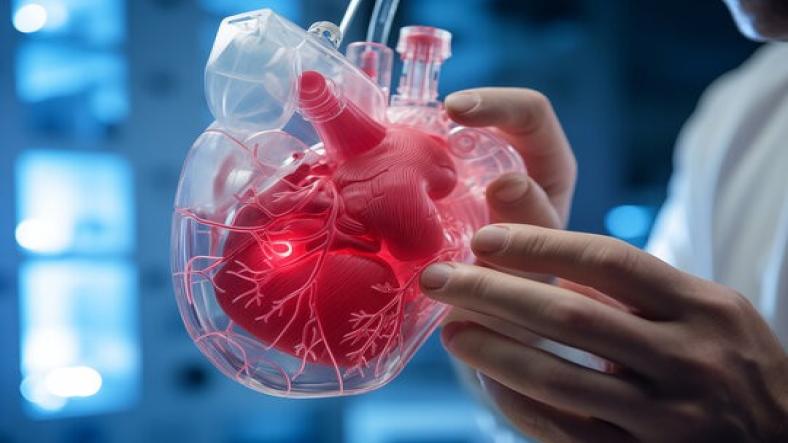Artificial organs represent one of the most groundbreaking advancements in modern medicine, offering hope to patients suffering from organ failure. With the increasing demand for organ transplants and the limited availability of donor organs, artificial organs have emerged as a life-saving alternative. These bioengineered or mechanically created organs aim to restore lost function, improve quality of life, and reduce dependency on organ donors.
What Are Artificial Organs?
Artificial organs are man-made devices designed to replace or support the function of natural organs. They can be either mechanical (like heart pumps) or bioengineered (grown using stem cells or tissue engineering). These organs are used when a patient’s natural organ is failing or has been removed due to disease or injury.
Benefits of Artificial Organs
1. Addressing Organ Shortages
- The demand for organ transplants far exceeds the supply of available donor organs.
- Artificial organs provide an alternative solution, potentially saving thousands of lives each year.
2. Reduced Rejection Risk
- Traditional organ transplants often require immunosuppressive drugs to prevent rejection.
- Bioengineered artificial organs, created using a patient’s own cells, significantly reduce this risk.
3. Extended Lifespan and Improved Quality of Life: Patients with organ failure who receive artificial organ implants can lead longer, healthier lives with fewer complications.
4. Temporary Solutions for Critical Patients: Devices like artificial hearts or kidney dialysis machines serve as temporary life-support systems for patients awaiting transplants.
5. Advancements in Regenerative Medicine: The development of artificial organs has accelerated research in tissue engineering and regenerative medicine, leading to more effective and personalized healthcare solutions.
Types of Artificial Organs
1. Artificial Heart
- Designed to replace the function of the human heart in patients with severe heart disease or heart failure.
- Examples include the SynCardia Total Artificial Heart, which has successfully helped patients awaiting heart transplants.
2. Artificial Kidney
- Dialysis machines act as external artificial kidneys by filtering waste from the blood.
- Research is ongoing to develop implantable bioartificial kidneys that can fully replace natural kidney function.
3. Artificial Lungs
- Extracorporeal Membrane Oxygenation (ECMO) is a temporary artificial lung system used for critically ill patients.
- Researchers are working on implantable artificial lungs to support long-term respiratory function.
4. Artificial Pancreas
- Helps regulate blood sugar levels in patients with diabetes by automatically delivering insulin.
- Modern artificial pancreas systems, like closed-loop insulin pumps, are improving diabetes management.
5. Artificial Liver
- Bioartificial livers are being developed to support liver function in patients with liver failure, reducing the need for transplants.
6. Bionic Limbs and Prosthetics
- Advanced prosthetics, powered by AI and brain-controlled interfaces, restore mobility and independence for amputees.
- Companies like Open Bionics and DEKA Research are leading the way in developing high-functioning bionic limbs.
Challenges and Limitations
Despite their potential, artificial organs face several challenges:
- High Costs: The development and implementation of artificial organs are expensive, limiting accessibility.
- Ethical Concerns: The use of bioengineered organs raises ethical questions about genetic modifications and the commercialization of human tissues.
- Technical Limitations: Some artificial organs still lack the durability and efficiency of natural organs, requiring ongoing improvements.
- Long-Term Compatibility: Mechanical devices may lead to complications such as blood clots or infections, requiring careful monitoring.
The Future of Artificial Organs
The future of artificial organs is promising, with advancements in biotechnology, nanotechnology, and 3D printing shaping the next generation of life-saving medical devices. Emerging trends include:
- 3D Bioprinting: Scientists are exploring the use of 3D printers to create fully functional, patient-specific organs using bio-ink made from human cells.
- Stem Cell Engineering: Growing organs in labs using stem cells could revolutionize transplant medicine by eliminating rejection risks.
- AI-Integrated Prosthetics: Smart prosthetics with AI-driven movement and sensory feedback are enhancing mobility for amputees.
- Wearable Artificial Organs: Portable artificial kidneys and lungs could replace bulky machines, allowing patients greater freedom.
Conclusion
Artificial organs are transforming healthcare by providing viable solutions for patients with organ failure. From mechanical hearts to bioengineered tissues, these innovations are bridging the gap between demand and supply in organ transplantation. As technology continues to evolve, artificial organs will become more accessible, efficient, and life-changing, ultimately redefining the future of medicine.
Thanks for reading the article, for more health related articles read our peoples blog articles.


![Dell [Smartchoice] Core i3-1215U, 12th Gen (8GB RAM/512GB SSD/FHD/Window 11/MS Office' 21/15"(38 cm)/15 Month McAfee/Black/1.48kg Laptop Dell [Smartchoice] Core i3-1215U, 12th Gen (8GB RAM/512GB SSD/FHD/Window 11/MS Office' 21/15"(38 cm)/15 Month McAfee/Black/1.48kg Laptop](https://m.media-amazon.com/images/I/61QXAqq9OhL._SX679_.jpg)
![Samsung Galaxy Tab S9 FE [Smartchoice], RAM 6 GB, ROM 128 GB Expandable, S Pen in-Box, Wi-Fi, IP68 Tablet, Gray Samsung Galaxy Tab S9 FE [Smartchoice], RAM 6 GB, ROM 128 GB Expandable, S Pen in-Box, Wi-Fi, IP68 Tablet, Gray](https://m.media-amazon.com/images/I/71BM3TBipEL._SX679_.jpg)











